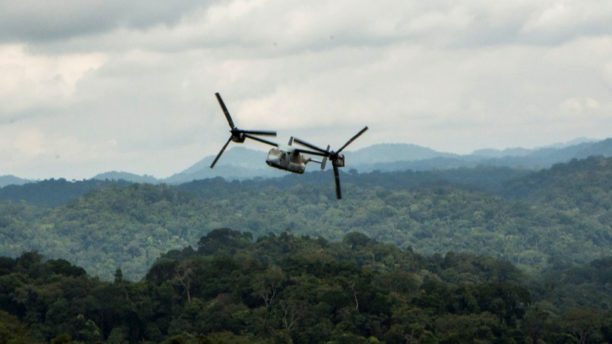
Public safety agencies are required to be experts in their own fields, but when drone programs are implemented they are also asked to be experts in aviation. New data-driven research shows how public safety agencies are using drone technology; and the difficulties that the agencies face in getting training, establishing procedures and managing data.
DRONERESPONDERS is a non-profit group organized to help public safety programs meet those challenges. Public safety organizations – whether considering drone technology or already developing a program – can reach out to DRONERESPONDERS (there is no cost for public safety professionals) and become part of the alliance. DRONERESPONDERS will also lead the Public Safety Summit at the Commercial UAV Expo Americas show in Las Vegas, October 28-30 at the Westgate Resort and Casino.
The following is a DRONERESPONDERS press release.
MIAMI, FL – As public safety agencies continue to adopt unmanned aircraft systems (UAS) and related technology for life safety missions, new research from DRONERESPONDERS – the leading 501(c)3 non-profit program supporting public safety UAS — provides a better understanding about how these new programs are developing, as well as a glimpse at many of the challenges facing first responders who are increasingly operating drones.
Among the key findings that DRONERESPONDERS discovered in their 2019 Mid-Year Public Safety UAS Report:
- 3 out of 4 public safety agencies claim they are already either operating drones or working on implementing a UAS program.
- More than 80% of public safety UAS operators either have obtained, or are pursuing, their FAA Part 107 certification.
- 82% of public safety agencies with UAS program are operating multi-rotor systems, while only 11% are using fixed or delta-wing drones.
- Over 35% of public safety UAS programs are using the FAA’s LAANC system for airspace requests.
The DRONERESPONDERS data included survey responses from 288 public safety professionals, combined with expert insight from DRONERESPONDERS analysts who work with a variety of stakeholders within the public safety UAS sector on a regular basis. Their findings paint a telling picture regarding the current state of public safety drone operations in the U.S.
“The data represents a clear snapshot illustrating how public safety agencies are adopting drones,” says Gregory Crutsinger, Ph.D., a DRONERESPONDERS Analyst and Principal at Scholar Farms in Berkeley, California. “Our survey sample size provided statistically valid insights that served to benchmark the current state of the sector.”
While conducting the research, DRONERESPONDERS was able to identify many of the key challenges still facing public safety UAS operations. Among them were a lack of standardized training and procedures for public safety remote pilots, a need to continue to adopt professional aviation decision making and risk management standards, improved understanding of operations within the National Airspace System, and greater proficiency at managing UAS data and producing actionable intelligence for incident commanders.
“Effective data management remains a bottleneck for the majority of public safety UAS programs,” says Crutsinger. “Everyone is focused on flying the drone, but they need to understand how to capture accurate data and then convert that imagery into useful tools for on-scene decision making and post-event analysis.”
DRONERESPONDERS says the 2019 Mid-Year Public Safety UAS Report represents the first in a continuing series of research reports they plan to conduct surrounding the rapidly evolving unmanned aviation and related technology in the rapidly evolving public safety sector.
“We’ll be working with our advisory team and our partners to help define the scope the future research initiatives,” says Charles Werner, Director, DRONERESPONDERS. “We will also add additional analysts who have the interest and experience in helping us undertake this important mission for public safety.”
DRONERESPONDERS is offering a complimentary copy of the 2019 Mid-Year Public Safety UAS Report to all DRONERESPONDERS members. There is no-cost for public safety professionals to join the DRONERESPONDERS program. To receive your copy of the report, visit research.droneresponders.org
About DRONERESPONDERS Public Safety Alliance
The DRONERESPONDERS non-profit mission is to facilitate preparedness, response and resilience using unmanned aircraft systems and related technologies operated by public safety, emergency services, and non-governmental volunteer organizations around the world. The DRONERESPONDERS Public Safety Alliance is a 501(c)3 non-profit operating program of AIRT, Inc. For more information on DRONERESPONDERS, please visit: http://droneresponders.org
Miriam McNabb is the Editor-in-Chief of DRONELIFE and CEO of JobForDrones, a professional drone services marketplace, and a fascinated observer of the emerging drone industry and the regulatory environment for drones. Miriam has penned over 3,000 articles focused on the commercial drone space and is an international speaker and recognized figure in the industry. Miriam has a degree from the University of Chicago and over 20 years of experience in high tech sales and marketing for new technologies.
For drone industry consulting or writing, Email Miriam.
TWITTER:@spaldingbarker
Subscribe to DroneLife here.
